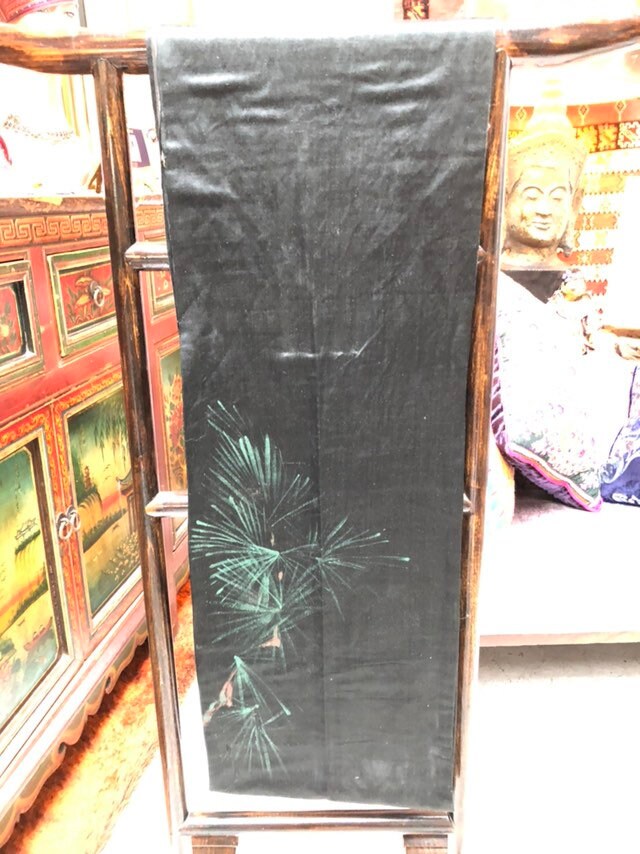1
/
of
4
Hunter Gatherer
Vintage Japanese Black Silk Obi with Handembroidered Painted Eagle
Vintage Japanese Black Silk Obi with Handembroidered Painted Eagle
Another stupendous obi, this one is has the simple elegance of traditional painting: what appears to be an eagle resting on a tree branch, set against a black silk background, is powerful in its composition. Truly stunning. This one is vintage, I venture to say close to 100 years old.
I use obi in a variety of ways, table runners, pillows, upholstery, accents of costumes. They can also be cut in half and placed on either side of an archway, held up by a thin rod of bamboo!
The obi is a belt tied around the waist of a woman’s Kimono to hold it in place. It is a necessary item when wearing a Kimono. However, about 400 years ago, the Obi was just a thin string or c waist cord. It is said that the width of Obi become a little wider in the beginning of Edo period (around 1600) and became as it is today in the middle of Edo period (around 1700). At the time, Kabuki, the traditional drama performed by male actors, was becoming popular among people. Because there are only male actors in Kabuki, they needed to emphasize the feminacy by wearing a thick and gorgeous obi when they play a role of women.
There are many types of obi, most of them are for women: wide obi made of brocade and narrower, simpler obi for everyday wear. The fanciest and most colourful obi are for young unmarried women. The contemporary women's obi is a very conspicuous accessory, sometimes even more so than the kimono robe itself. A fine formal obi might cost more than the rest of the entire outfit.
Obi are categorised by their design, formality, material, and use. Informal obi are narrower and shorter.
The length is 132" while the width is 12". The condition is good considering it's age, so it does show signs of wear. All made by hand, of course.
I use obi in a variety of ways, table runners, pillows, upholstery, accents of costumes. They can also be cut in half and placed on either side of an archway, held up by a thin rod of bamboo!
The obi is a belt tied around the waist of a woman’s Kimono to hold it in place. It is a necessary item when wearing a Kimono. However, about 400 years ago, the Obi was just a thin string or c waist cord. It is said that the width of Obi become a little wider in the beginning of Edo period (around 1600) and became as it is today in the middle of Edo period (around 1700). At the time, Kabuki, the traditional drama performed by male actors, was becoming popular among people. Because there are only male actors in Kabuki, they needed to emphasize the feminacy by wearing a thick and gorgeous obi when they play a role of women.
There are many types of obi, most of them are for women: wide obi made of brocade and narrower, simpler obi for everyday wear. The fanciest and most colourful obi are for young unmarried women. The contemporary women's obi is a very conspicuous accessory, sometimes even more so than the kimono robe itself. A fine formal obi might cost more than the rest of the entire outfit.
Obi are categorised by their design, formality, material, and use. Informal obi are narrower and shorter.
The length is 132" while the width is 12". The condition is good considering it's age, so it does show signs of wear. All made by hand, of course.
Regular price
$250.00
Regular price
Sale price
$250.00
Unit price
/
per
1 in stock
Couldn't load pickup availability
Share








